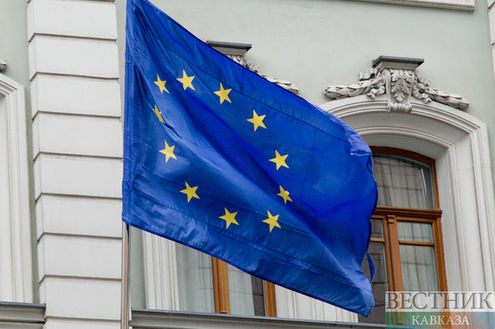Russians bond North Caucasus peoples
Oleg Kusov, exclusively for Vestnik Kavkaza
When did Russians settle in mass numbers in the Caucasus? According to historians, the process started in the 17th century under Ivan the Terrible. Natives of Muscovy actually formed the basis of the Caucasus Cossacks. Russians have been living in the North Caucasus for five centuries, and they cannot be called aliens. Some people mistakenly think that their own Cossacks are the people who came here in the Soviet years of industrialization and industrial and post-industrial recovery from the central regions of Russia. Meanwhile, the Cossacks have a mountain culture. These people are mentally closer to the North Caucasus peoples than to the residents of Central Russia. Even Leo Tolstoy paid attention to this fact in “The Cossacks”: “The Cossack families are related to Chechen ones, and love of freedom, laziness, robbery and war are the main features of their characters. The influence of Russia is expressed only negatively: voting restraints, taking off of bells and the troops which are settled there…”
During Perestroika and Yeltsin’s chaos everybody suffered in the North Caucasus, including Russians. In 1989 in Checheno-Ingushetia they constituted 20% of the population; within ten years they were only 4% of the population of the territory. In general, the percentage of the Russian population decreased from 26% to 15% in the North Caucasus republics, considering that North Ossetia, Kabardino-Balkaria, Adygea and Dagestan have "Russian" districts, such as Prokhladnensky, Maisky, Mozdoksky, Giaginsky, Maikopsky, Kizlyarsky. These are similar statistics. However, those who speak about it don’t mention that the number of representatives of “native” peoples who moved to Moscow, St. Petersburg and other major cities was much greater than the number of Russians. The main reason for their resettlement was the difficult socio-economic situation in the North Caucasus.
In the early 21st century inter-ethnic tensions in the North Caucasus reduced significantly. Nationalistic views weakened. Heads of the republics became more dependent on the Kremlin than on local nationalist and tribal attitudes; the situation in the mountain republics calmed down. Extremist radicals were marginalized, going into the Salafi underground. Those who stayed changed their socio-political slogans. Programmes for “the return and settlement of the Russian-speaking population” appeared in the republics. However, despite all efforts, neither Russian nor “native” people are returning to the republics of the North Caucasus. Moreover, they are still moving away – Moscow, St. Petersburg and other major centers provide more opportunities for a better life.
In the North Caucasus the authorities still have a tribal character. At the same time, clans are steadily losing their ethnic, regional, and gorge types. Today they are formed differently – from the economic elites who earned big money during the 1990s by various means. Medium-sized business is poorly developed in the republics. Industry, including the defense and high-tech industries, has not recovered. It is almost impossible to be appointed to a state service position without promotion and strong personal contacts.
The brightest example of a return of the Russian population is Dagestan. The Kizlyarsky and Tarumovsky districts used to be called “Russian.” In Soviet years young people from Central Russia came there to build socialism. Many of them stayed there forever, built families, including international ones. In Makhachkala a monument to a Russian teacher has been erected recently. 450 teachers from Russian regions went there in the years of the Great Patriotic War, as the republic was left without teachers, who were off at the front. In the postwar times, according to experts, the inflow of Russian specialists to Dagestan grew even more – up to 1500 people a year went there. The current head of Dagestan, Ramazan Abdulatipov, mentioned an interesting fact to journalists. It turns out that in his native village of Gebguta there is a monument to a Russian teacher as well. It is a two-meter wood sculpture by an artist from Udmurtia. Ramazan Abdulatipov’s teacher was from Sverdlovsk. Probably that’s why under Abdulatipov a wide-scale programme on a return of the Russian population for 2014-2017 appeared in the republic. Zikrula Ilyasov, the first deputy minister for ethnic policy of the Republic of Dagestan, told Vestnik Kavkaza about the results of the first year of the programme’s implementation.
- How did the programme appear?
- It appeared due to the head of our republic, Ramazan Abdulatipov. It concerns not only those who want to return, but also Russians who are living in Dagestan. Last year 112 million rubles were allocated to it. Those who left the republic in previous years are contacting us. In general, the programme is being implemented in the north of Dagestan, where our Russian compatriots have historically lived. However, there are people who want to settle in Makhachkala and Izberbash.
The outflow of Russians from our region took place in the 1990s for various reasons, first of all economic ones. I remember in late 1993 at a session of the Dagestani government we discussed the results of the year, and it was clear that Russians were leaving en masse. A special commission was created, I was appointed to do the job. It was a difficult time. The commission is still working; a deputy chairman of the government heads it. Last year we wanted to open a cadet corps in Kizlyar. At the moment we are conducting registration of Cossack social organizations – there are 23 of them in Dagestan. We discuss and settle land issues, build and reconstruct roads in Kizlyar. The programme requires a multiplication of the number of Russian students in our universities. The head of the republic pays special attention to this point.
- What results were achieved in fulfillment of the programme last year?
- They were smaller than we would like to see. Unfortunately, the difficult economic situation forced us to sequester all republican programmes. However, we hope that in 2015 it will be easier, and we will fulfill all the plans. Our call has been heard; many Russian people want to move to Dagestan. Dozens of families who are refugees from Ukraine want to stay in Kizlyar. We provide them with work and timely shelters.
- What can you say about the failures in fulfillment of the programme?
- There is insufficient financing.
- Did the outflow of the Russian population influence the republic's economy?
- It was felt in the 1990s. High-class professionals left, because industry was destroyed. The outflow of the Russian population influenced a non-material, but very important sphere. The Russians had a very important function in Dagestan – they were a bridge between various ethnic groups in the republic.
- How many Russian families returned to Dagestan in 2014?
- A little more than 50.
- There is information that not only Russians are leaving the North Caucasus today for other regions and even abroad.
- This is true. In recent years only 16% of those who left Dagestan were Russians. Today the situation is changing. The number of those who leave is reducing.
6110 views





